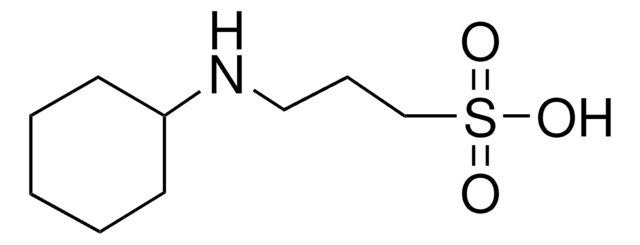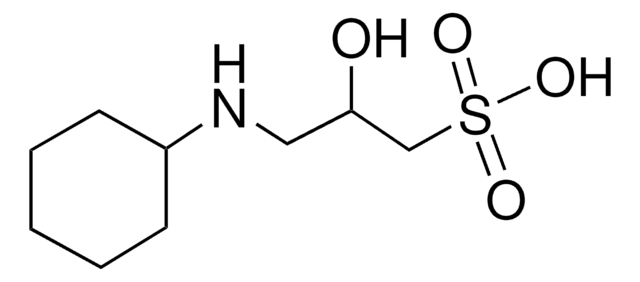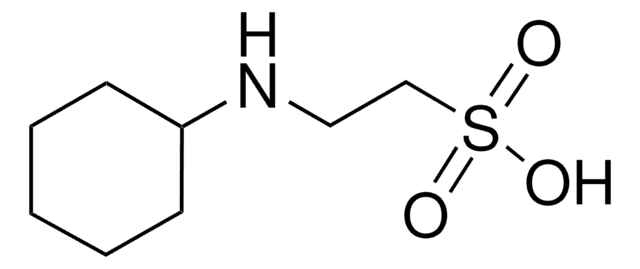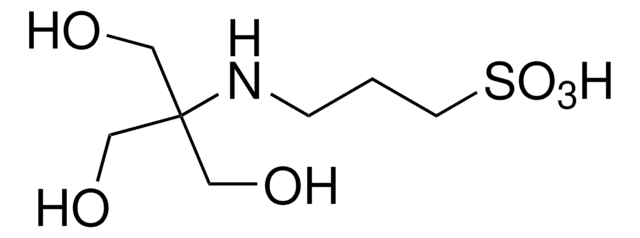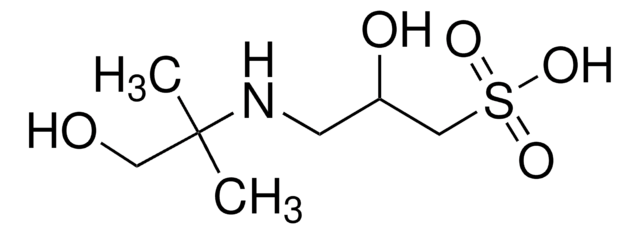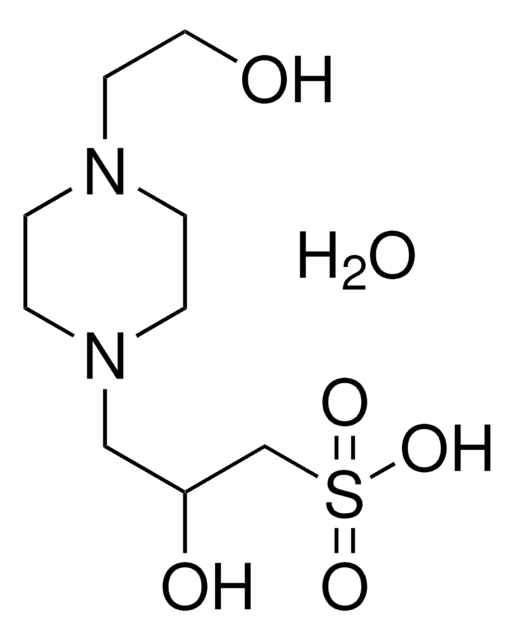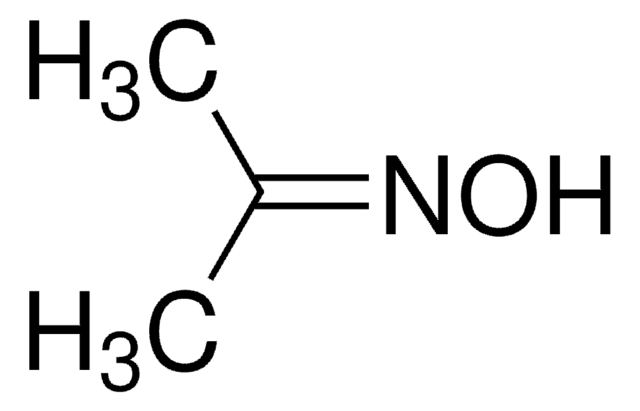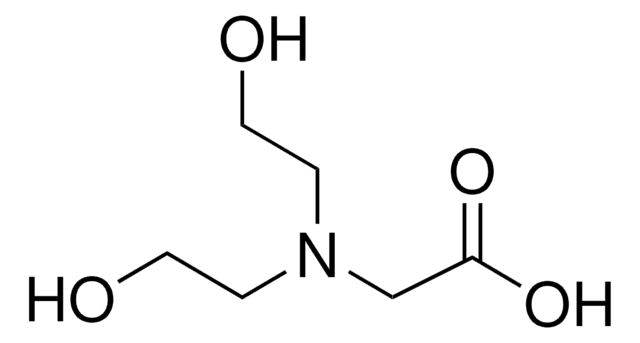C2885
CHES
≥99.0% (titration)
Synonym(s):
2-(Cyclohexylamino)ethanesulfonic acid
Sign Into View Organizational & Contract Pricing
All Photos(5)
About This Item
Empirical Formula (Hill Notation):
C8H17NO3S
CAS Number:
Molecular Weight:
207.29
Beilstein:
2967601
EC Number:
MDL number:
UNSPSC Code:
12161700
PubChem Substance ID:
NACRES:
NA.25
Recommended Products
Quality Level
Assay
≥99.0% (titration)
form
crystalline
pH
3.0-5.0 (103.6 g/L)
useful pH range
8.6-10.0
pKa (25 °C)
9.3
solubility
water: 0.6 g/25 mL, clear, colorless
application(s)
diagnostic assay manufacturing
SMILES string
OS(=O)(=O)CCNC1CCCCC1
InChI
1S/C8H17NO3S/c10-13(11,12)7-6-9-8-4-2-1-3-5-8/h8-9H,1-7H2,(H,10,11,12)
InChI key
MKWKNSIESPFAQN-UHFFFAOYSA-N
Looking for similar products? Visit Product Comparison Guide
General description
CHES (2-(N-cyclohexylamino)ethanesulphonic acid) is regarded as Good′s buffers for its self-buffering and biocompatible feature. It is used in protein stabilization and does not interact with metals.
Application
CHES has been used:
- as a buffer in mannanase activity assay of antarctic fungal isolates
- as a buffer for DNA digestion and labeling of 2′-deoxyadenosine 3′-monophosphate
- as a component of Wilson and Horne extraction buffer for characterization of rat plasma enzymes
Storage Class Code
13 - Non Combustible Solids
WGK
WGK 3
Flash Point(F)
Not applicable
Flash Point(C)
Not applicable
Personal Protective Equipment
dust mask type N95 (US), Eyeshields, Gloves
Choose from one of the most recent versions:
Already Own This Product?
Find documentation for the products that you have recently purchased in the Document Library.
Customers Also Viewed
Determination of folate in some cereals and commercial cereal-grain products consumed in Poland using trienzyme extraction and high-performance liquid chromatography methods
Gujska E and Kuncewicz A
European Food Research and Technology, 221(1-2), 208-213 (2005)
Good's buffers as a basis for developing self-buffering and biocompatible ionic liquids for biological research
Taha M, et al.
Green Chemistry, 16(6), 3149-3159 (2014)
Hemicellulase activity of antarctic microfungi
Bradner JR, et al.
Journal of Applied Microbiology, 87(3), 366-370 (1999)
Detection of Bulky Endogenous Oxidative DNA Lesions Derived from 8, 5?-Cyclo-2?-deoxyadenosine by 32P-Postlabeling Assay
Zhou GD and Moorthy B
Current Protocols in Toxicology / Editorial Board, Mahin D. Maines (editor-in-chief) ... [Et al.], 64(1), 17-17 (2015)
Jun Yang et al.
Langmuir : the ACS journal of surfaces and colloids, 24(18), 10265-10272 (2008-08-20)
A universal nitric oxide (NO) generating surface is assembled via Layer-by-Layer (LbL) deposition of sodium alginate (Alg) and organoselenium modified polyethyleneimine (SePEI) on quartz and polymeric substrates. The immobilized SePEI species is capable of catalytically decomposing S-nitrosothiol species (RSNO) to
Our team of scientists has experience in all areas of research including Life Science, Material Science, Chemical Synthesis, Chromatography, Analytical and many others.
Contact Technical Service
